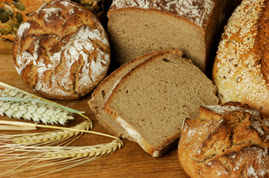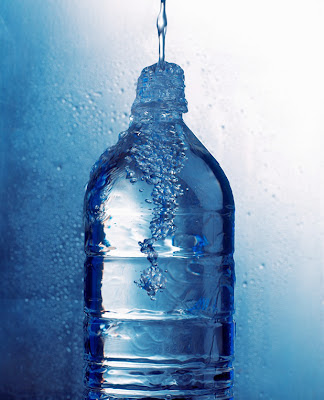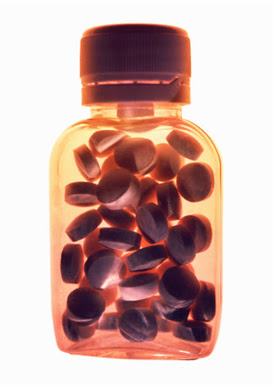Proper hydration is a key component for effective athletic performance. However, the impact and importance of hydration during basketball practice or, more importantly, a game is often unappreciated and underemphasized by the athletes and coaching staff. Many players don’t realize the effect dehydration may have on their on-court performance. As little as a 2% body weight deficit during practice or competition can diminish decision making and basketball-specific skills, slow response times, and cause fatigue to occur more rapidly.1,2,4 Therefore, it is clearly advantageous for players to enter a game well-hydrated, and maintain their hydration throughout the game, as the outcome may depend on split-second decisions in the closing minutes of the contest.
Sweat rate and fluid intake in basketball
Studies show that a high percentage of basketball players (from middle school up to the NBA) are entering games dehydrated.5 Adult and older adolescent basketball players on average lose 2.0-4.5 L (67-152 fl. oz) of sweat over the course of a 2-hr practice and 1.0-4.6 L (33-155 fl. oz) during a game.4 While these sweat rates (at the upper end) may seem high, these extensive losses are very manageable if the players are deliberate in consuming the proper amount of fluid throughout their practices and games. However, studies also have shown that basketball players typically only consume about half of what they lose during practice and competition.3,5 This is often times due to the fact that athletes underestimate the amount of fluid they are losing and because our thirst mechanism doesn’t provide the proper stimulus to fully maintain hydration during exercise. You may be fairly dehydrated and still not feel that thirsty during or after exercise.
Recommendations
Make sure to start each practice and game fully-hydrated. A simple way to determine proper hydration is to look at the color of your urine before you start. It should be a light color (lemonade color). If your urine is a darker color (apple juice color), more than likely you are dehydrated. But also make sure you are not overly hydrated, which can also hurt performance. If you are going to the bathroom often (e.g., every 45 minutes) you are probably drinking too much.
Drink regularly throughout the practice/game. A general recommendation for adults and older adolescents is to drink 6-8 oz. of fluid (water or sports drink) every 15 minutes. In addition, you also need to consider your sweat rate, the intensity of play, and the environmental conditions (in-season game vs. summer tournament) and adjust fluid consumption accordingly.
A more accurate way to determine sufficient hydration is to monitor your weight before and after practice or a game. A weight loss of 2% or greater indicates inadequate fluid consumption. For every pound of weight loss after play or practice, 16-20 oz. of fluid should be consumed over the course of the night to the next day.
If you are expending a lot of energy (playing at a high intensity and/or the duration of the game is greater than 90 minutes), a sports drink is recommended to replenish some carbohydrate and electrolytes. Stay away from energy drinks, soda, and caffeinated beverages, as they may cause you to become dehydrated and hurt your performance!
Coaches and training staffs also play key roles in keeping their athletes properly hydrated. Coaches need to schedule enough water breaks in practice and encourage their athletes to drink regularly throughout games, during time-outs, and when they are recovering on the bench.
Following these recommendations can give you a performance advantage over your opponent the next time you step out onto the court.
Guest Blogger: Jason Dorman, MS, CSCS - Operations Manager at The National Institute for Athletic Health and Performance. Follow him on Twitter @SanfordJasonD
1. Baker, L.B., D.E. Conroy, and W.L. Kenney, Dehydration Impairs Vigilance-Related Attention in Male Basketball Players. Medicine & Science in Sports & Exercise, 2007. 39(6): p. 976-983.
2. Baker, L.B., et al., Progressive Dehydration Causes a Progressive Decline in Basketball Skill Performance. Medicine & Science in Sports & Exercise, 2007. 39(7): p. 1114-1123.
3. Broad, E.M., et al., Body Weight Changes and Voluntary Fluid Intakes During Training and Competition Sessions in Team Sports. International Journal of Sport Nutrition, 1996. 6: p. 307-320.
4. Dougherty, K.A., et al., Two Percent Dehydration Impairs and Six Percent Carbohydrate Drink Improves Boys Basketball Skills. Medicine & Science in Sports & Exercise, 2006. 38(9): p. 1650-1658.
5. Osterberg, K.L., C.A. Horswill, and L.B. Baker, Pregame Urine Specific Gravity and Fluid Intake by National Basketball Association Players. Journal of Athletic Training, 2009. 44(1): p. 53-57.

































